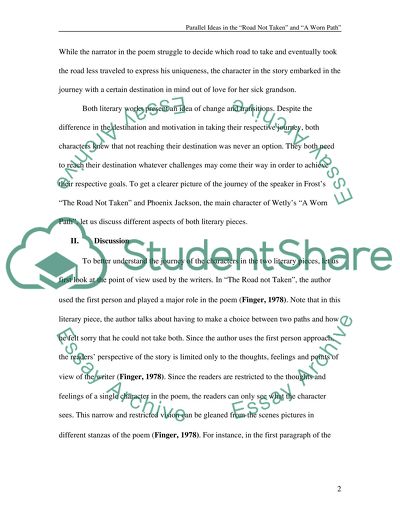Cite this document
(“Parallel Ideas in the Road Not Taken and A Worn Path Research Paper”, n.d.)
Retrieved from https://studentshare.org/literature/1411744-parallel-ideas-in-the-road-not-taken-and-a-worn-path
Retrieved from https://studentshare.org/literature/1411744-parallel-ideas-in-the-road-not-taken-and-a-worn-path
(Parallel Ideas in the Road Not Taken and A Worn Path Research Paper)
https://studentshare.org/literature/1411744-parallel-ideas-in-the-road-not-taken-and-a-worn-path.
https://studentshare.org/literature/1411744-parallel-ideas-in-the-road-not-taken-and-a-worn-path.
“Parallel Ideas in the Road Not Taken and A Worn Path Research Paper”, n.d. https://studentshare.org/literature/1411744-parallel-ideas-in-the-road-not-taken-and-a-worn-path.


